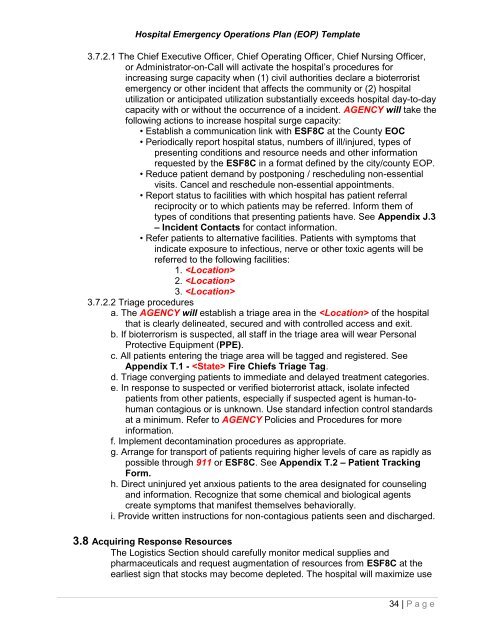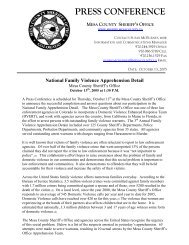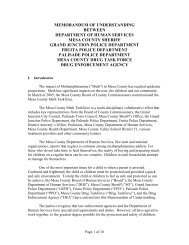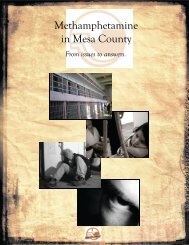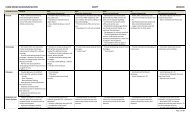Hospital Emergency Operations Plan (EOP) TEMPLATE
Hospital Emergency Operations Plan (EOP) TEMPLATE
Hospital Emergency Operations Plan (EOP) TEMPLATE
Create successful ePaper yourself
Turn your PDF publications into a flip-book with our unique Google optimized e-Paper software.
<strong>Hospital</strong> <strong>Emergency</strong> <strong>Operations</strong> <strong>Plan</strong> (<strong>EOP</strong>) Template<br />
3.7.2.1 The Chief Executive Officer, Chief Operating Officer, Chief Nursing Officer,<br />
or Administrator-on-Call will activate the hospital’s procedures for<br />
increasing surge capacity when (1) civil authorities declare a bioterrorist<br />
emergency or other incident that affects the community or (2) hospital<br />
utilization or anticipated utilization substantially exceeds hospital day-to-day<br />
capacity with or without the occurrence of a incident. AGENCY will take the<br />
following actions to increase hospital surge capacity:<br />
• Establish a communication link with ESF8C at the County EOC<br />
• Periodically report hospital status, numbers of ill/injured, types of<br />
presenting conditions and resource needs and other information<br />
requested by the ESF8C in a format defined by the city/county <strong>EOP</strong>.<br />
• Reduce patient demand by postponing / rescheduling non-essential<br />
visits. Cancel and reschedule non-essential appointments.<br />
• Report status to facilities with which hospital has patient referral<br />
reciprocity or to which patients may be referred. Inform them of<br />
types of conditions that presenting patients have. See Appendix J.3<br />
– Incident Contacts for contact information.<br />
• Refer patients to alternative facilities. Patients with symptoms that<br />
indicate exposure to infectious, nerve or other toxic agents will be<br />
referred to the following facilities:<br />
1. <br />
2. <br />
3. <br />
3.7.2.2 Triage procedures<br />
a. The AGENCY will establish a triage area in the of the hospital<br />
that is clearly delineated, secured and with controlled access and exit.<br />
b. If bioterrorism is suspected, all staff in the triage area will wear Personal<br />
Protective Equipment (PPE).<br />
c. All patients entering the triage area will be tagged and registered. See<br />
Appendix T.1 - Fire Chiefs Triage Tag.<br />
d. Triage converging patients to immediate and delayed treatment categories.<br />
e. In response to suspected or verified bioterrorist attack, isolate infected<br />
patients from other patients, especially if suspected agent is human-tohuman<br />
contagious or is unknown. Use standard infection control standards<br />
at a minimum. Refer to AGENCY Policies and Procedures for more<br />
information.<br />
f. Implement decontamination procedures as appropriate.<br />
g. Arrange for transport of patients requiring higher levels of care as rapidly as<br />
possible through 911 or ESF8C. See Appendix T.2 – Patient Tracking<br />
Form.<br />
h. Direct uninjured yet anxious patients to the area designated for counseling<br />
and information. Recognize that some chemical and biological agents<br />
create symptoms that manifest themselves behaviorally.<br />
i. Provide written instructions for non-contagious patients seen and discharged.<br />
3.8 Acquiring Response Resources<br />
The Logistics Section should carefully monitor medical supplies and<br />
pharmaceuticals and request augmentation of resources from ESF8C at the<br />
earliest sign that stocks may become depleted. The hospital will maximize use<br />
34 | P a g e


